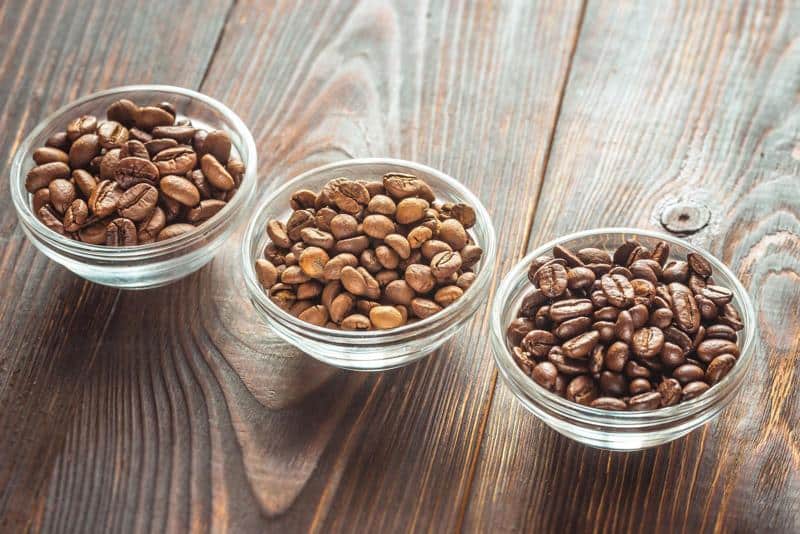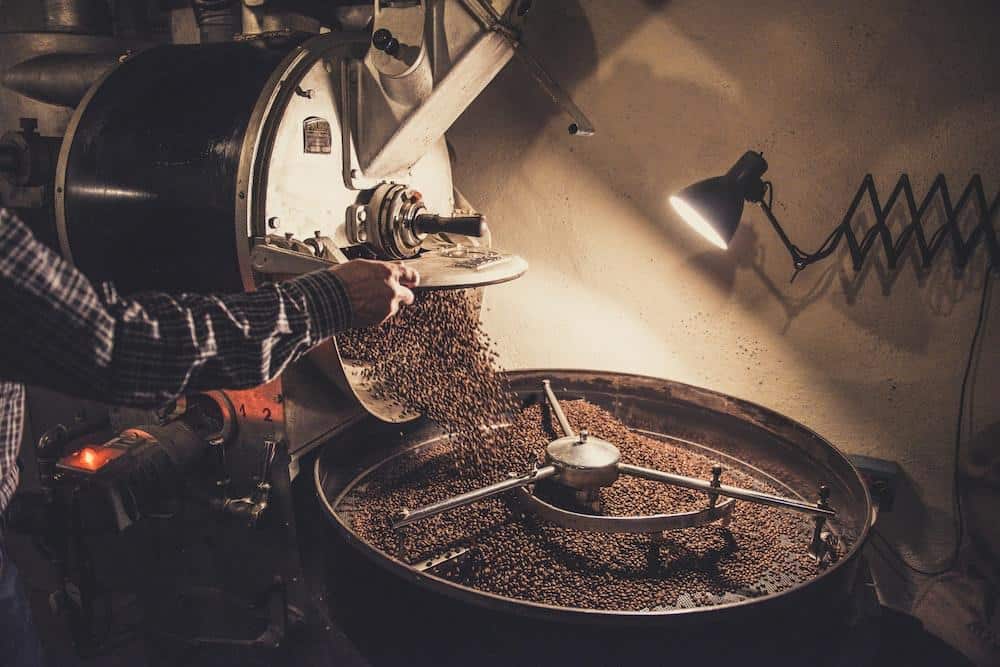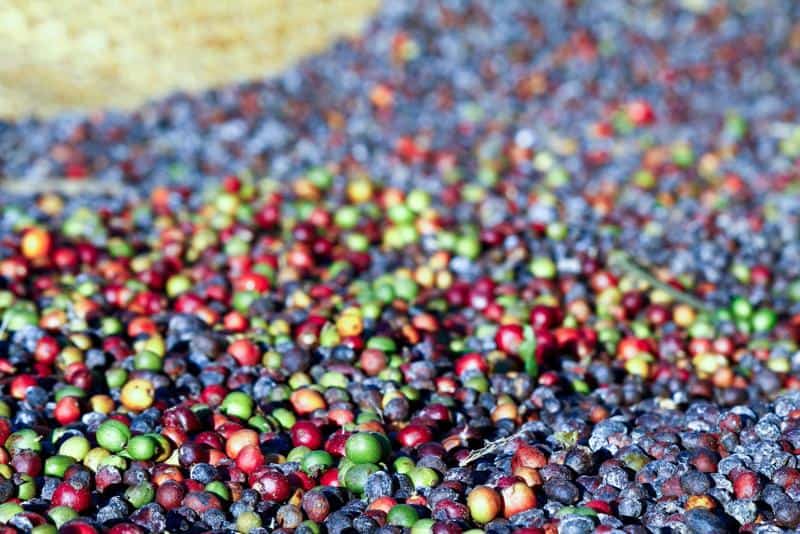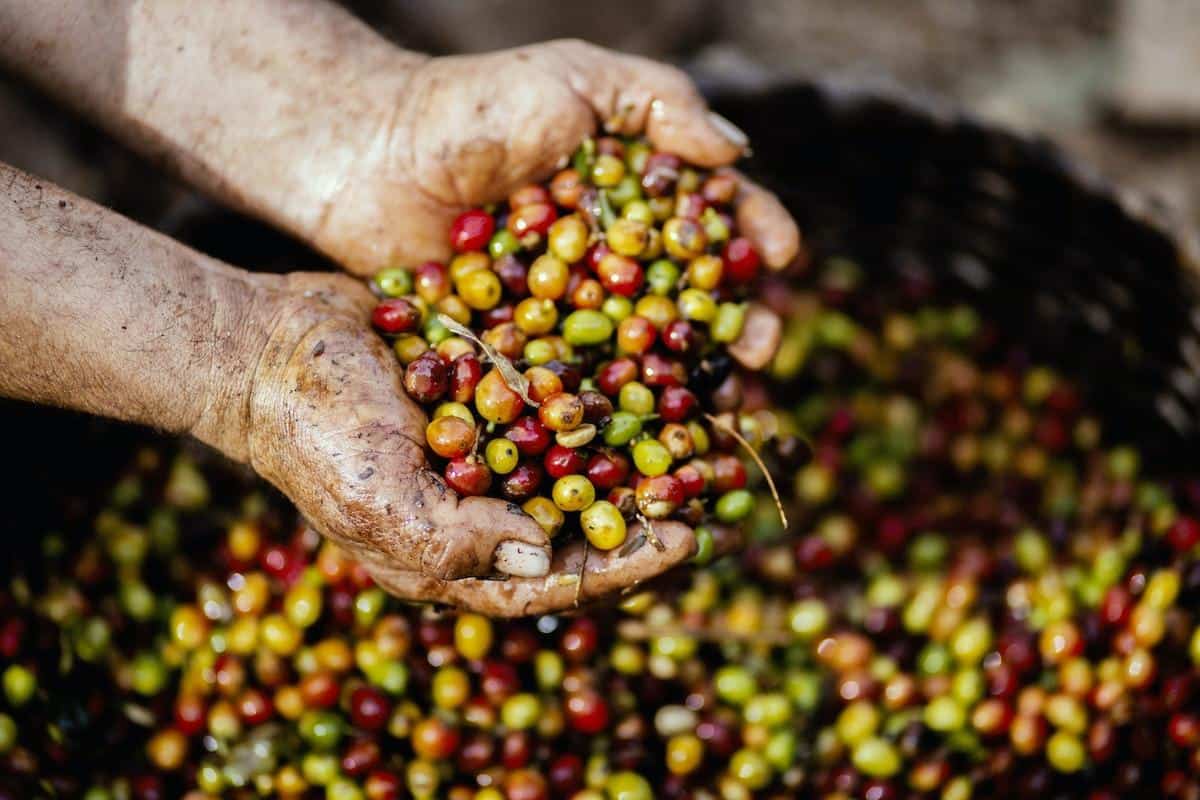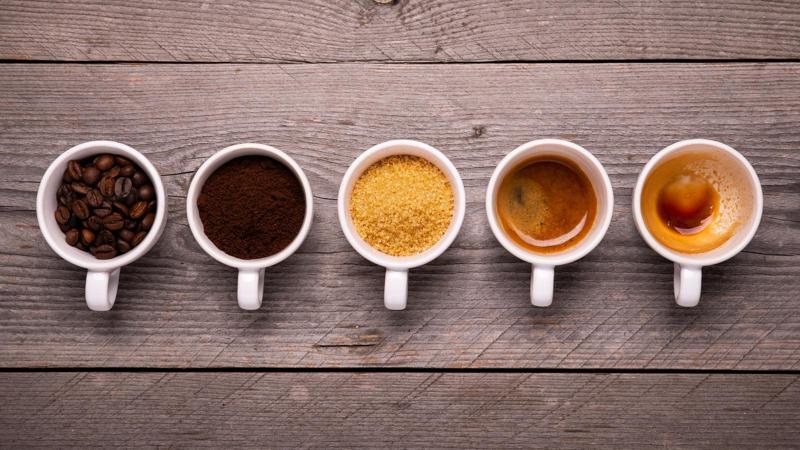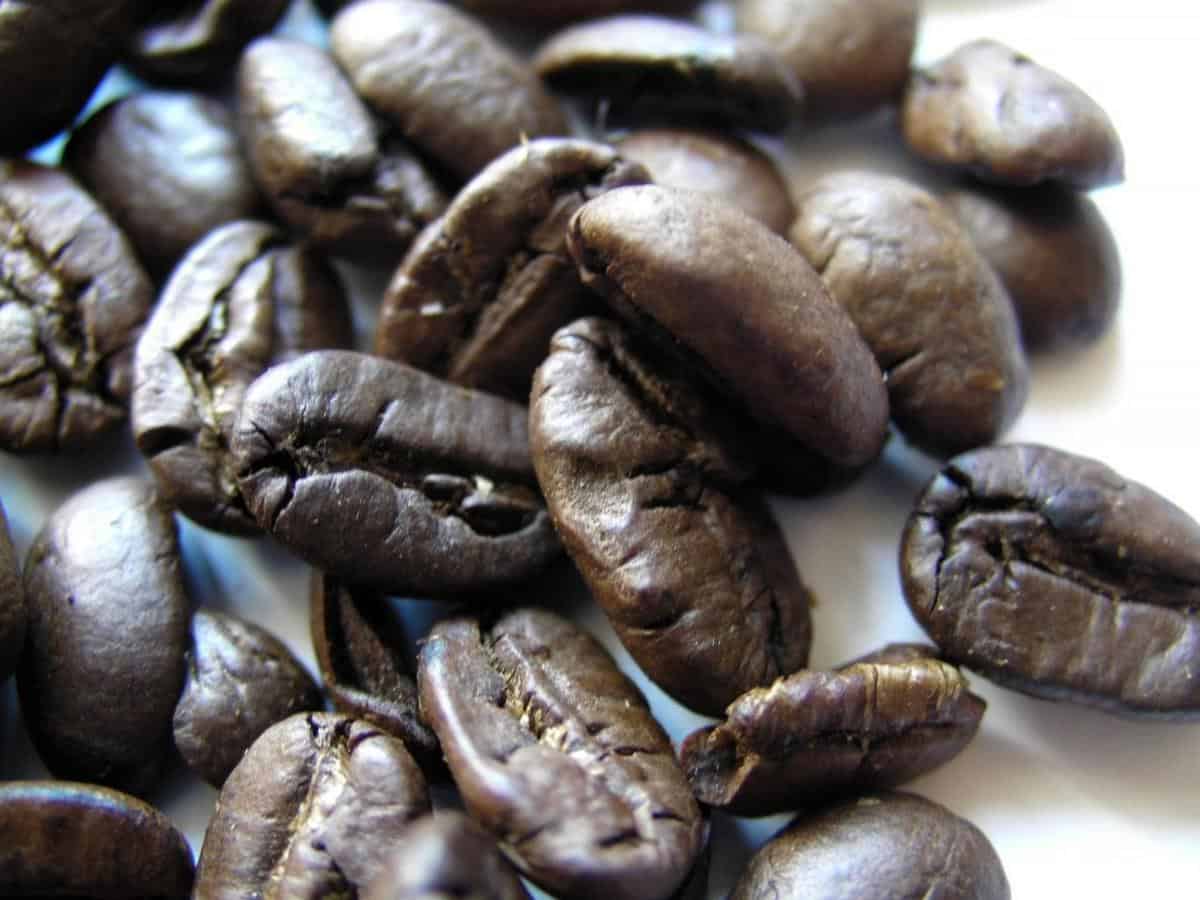All types of coffee beans are more than just the fuel that kickstarts our mornings; they are a gateway into the amazing world of flavors and aromas. From the smooth and sophisticated Arabica beans to the robust and bold Robusta beans, each type offers a unique experience for coffee connoisseurs and enthusiasts alike. In this ultimate guide, we will reveal the secrets behind different coffee bean varieties, uncovering their distinct characteristics and unveiling their origins.
Arabica beans, known as the king of coffee, dominate the global market with their superior taste and aroma. We will dive deep into this popular variety, exploring its cultivation methods, flavor profiles, and why it is beloved by coffee lovers around the world.
But Arabica isn’t alone in the coffee landscape – we will also uncover the unique qualities of Robusta beans. Despite being considered an underdog, Robusta has made its mark with its high caffeine content and bold flavor profile.
Beyond these well-known varieties, specialty coffee beans offer an elevated experience for those seeking different taste sensations. We will explore rare and exquisite varieties that allow you to elevate your coffee game and savor truly exceptional cups of java. Additionally, we will delve into single-origin beans from different regions worldwide, unraveling their distinct flavor profiles and showcasing how terroir influences taste.
As we embark on this journey through the world of coffee beans, we will also demystify common misconceptions about decaf coffee beans and showcase exotic varieties that push boundaries in taste. Furthermore, we’ll shed light on organic and fair trade coffee production because knowing where our beans come from is just as important as savoring their deliciousness.
So join us as we dive into this ultimate guide to discover everything you need to know about types of coffee beans. With this knowledge at hand, you can empower yourself to choose your ideal bean variety for that perfect cup of joe every time. Prepare to embark on a flavorful adventure that is sure to awaken your senses and leave you craving more.
Arabica Beans
Arabica beans are by far the most popular and widely consumed variety of coffee beans. Known for their exceptional flavor and aroma, Arabica beans are cultivated in several countries around the world, including Brazil, Colombia, Ethiopia, and Costa Rica. In this section, we will explore the secrets behind the popularity of Arabica beans and what sets them apart from other varieties.
One of the reasons why Arabica beans are highly sought after is their flavor profile. They tend to have a sweeter and more complex taste compared to other types of coffee beans. This is due to their low acidity level and a higher concentration of sugars, which gives them a smoother and more enjoyable flavor. Additionally, Arabica beans often exhibit notes of fruit, chocolate, caramel, or floral undertones, making them a favorite among coffee enthusiasts.
Another factor that contributes to the popularity of Arabica beans is their lower caffeine content compared to Robusta beans. While each cup contains approximately 80 milligrams of caffeine on average, Arabica beans contain only about 1-1.5% caffeine content as opposed to Robusta’s 2-2.7%. This makes Arabica beans a preferred choice for those who are more sensitive to caffeine or prefer a milder coffee experience.
| Characteristic | Data |
|---|---|
| Origin | Ethiopia (where it was first discovered), Brazil (largest producer), Colombia (known for high-quality Arabic) |
| Flavor Profile | Sweet, smooth, complex; can have notes of fruit, chocolate, caramel or floral undertones |
| Caffeine Content | 1-1.5% |
Robusta Beans
Robusta beans, often referred to as the “dark horse” of coffee, have been gaining popularity in recent years due to their unique characteristics and flavor profile. While Arabica beans may be the go-to choice for many coffee connoisseurs, Robusta beans offer a different experience that is worth exploring.
One of the key characteristics of Robusta beans is their higher caffeine content compared to Arabica beans. On average, Robusta beans contain about 2.7% caffeine, while Arabica beans have about 1.5%. This higher caffeine content gives Robusta coffee a stronger and more bitter taste, making it a preferred choice for those who enjoy a more intense and robust flavor in their cup of joe.
In addition to its bold flavor, Robusta coffee also boasts a thicker body and crema compared to Arabica varieties. The higher level of lipids and sugars present in Robusta beans contribute to its creamy mouthfeel and rich texture. This makes it an excellent choice for espresso-based drinks such as cappuccinos and lattes, as it can stand up well to milk and other ingredients without losing its distinctive taste.
| Characteristics | Robusta | Arabica |
|---|---|---|
| Caffeine Content | 2.7% | 1.5% |
| Taste Profile | Bolder and more bitter | Milder and sweeter |
| Body | Thick and creamy | Lighter |
| Creama | Pronounced | Limited |
While Robusta beans may not be everyone’s cup of coffee, they have certainly carved out a space for themselves in the coffee industry. Their unique characteristics offer a different taste experience that can be enjoyed by those who appreciate a stronger and bolder flavor profile. So, next time you’re looking to explore something new, don’t hesitate to give Robusta coffee a try and discover the dark horse of the coffee world.
Specialty Coffee Beans
Specialty coffee beans offer a unique and elevated coffee experience for those who are looking to take their coffee game to the next level. These beans are known for their exceptional quality, distinctive flavors, and rare varieties that cannot be found in mass-produced coffee. Specialty coffee is sourced from specific regions around the world and undergoes stringent quality control measures throughout the entire production process, ensuring that only the best beans make it to your cup.
The Definition of Specialty Coffee Beans
Specialty coffee is not just any type of coffee; it is a classification based on strict criteria. According to the Specialty Coffee Association (SCA), specialty coffee must have a minimum score of 80 points out of 100 on an evaluation scale known as the Coffee Quality Institute (CQI) scale. This scoring system takes into account various factors such as flavor, aroma, aftertaste, acidity, body, and balance.
Flavor Profiles and Varieties
One of the most exciting aspects of specialty coffee beans is their wide range of flavors and profiles. Each region has its own unique combination of climate, altitude, soil type, and processing methods that contribute to the distinct taste of the beans. Some popular specialty coffee varieties include Ethiopian Yirgacheffe with its floral and fruity notes, Colombian Supremo known for its balanced acidity and sweetness, Jamaican Blue Mountain with its smooth and refined flavor profile, and many more.
The Importance of Direct Trade
Direct trade is another key aspect of specialty coffee beans. Direct trade refers to a sourcing method where roasters establish direct relationships with farmers or cooperatives in order to ensure fair wages and better working conditions for producers. This also allows for greater transparency in terms of bean sourcing and sustainability practices. By supporting direct trade practices when purchasing specialty coffees, consumers can have peace of mind knowing that they are contributing to a more ethical and sustainable coffee industry.
Single-Origin Coffee Beans
In the world of coffee, single-origin beans hold a special place. These beans come from a particular region or country, allowing coffee enthusiasts to explore the unique flavors and characteristics that each origin has to offer. From the vibrant and fruity notes of African coffees to the earthy and chocolatey flavors of South American varieties, single-origin beans provide a captivating journey for any coffee lover.
One aspect that sets single-origin beans apart is their distinct flavor profile. The soil composition, climate conditions, altitude, and processing methods all play a role in shaping the taste of the coffee beans. For example, Ethiopian coffees are known for their bright acidity, floral aromas, and complex fruitiness. On the other hand, Brazilian coffees often exhibit lower acidity levels with a nutty sweetness and a full-bodied mouthfeel.
| Region | Characteristics |
|---|---|
| Ethiopia | Bright acidity, floral aromas, complex fruitiness |
| Colombia | Moderate acidity, caramel sweetness |
| Brazil | Low acidity, nutty sweetness, full-bodied |
| Jamaica Blue Mountain | Crisp acidity with hints of chocolate and spice |
| Costa Rica | Bright acidity, citrus flavors, honey sweetness |
Exploring single-origin coffee beans allows you to develop a deeper appreciation for the diversity and complexity of coffee. It also empowers you to find your preferred flavor profiles, allowing you to tailor your brewing methods and explore different brewing techniques that enhance the natural characteristics of each origin.
Whether you prefer a lively African coffee or a smooth South American variety, single-origin beans offer an immersive experience where each cup tells a story of its origin. So next time you’re browsing through the coffee aisle or visiting your favorite café, consider trying a bag of single-origin beans to embark on an exciting journey through the world of coffee flavors.
Blends
When it comes to coffee, blends offer a unique and delightful experience by combining different types of coffee beans. Blending is an art that requires careful consideration of flavor profiles and characteristics of each bean variety. By creating a harmonious union of flavors, blends can offer a well-balanced cup that caters to various taste preferences.
There are different types of blends available in the market, each with its own distinct qualities. Some common examples include:
- Regional Blends: These blends combine beans from different regions or countries to create a balanced flavor profile. For instance, a blend might include beans from Central America, South America, and Africa to achieve a combination of fruity notes, chocolatey undertones, and bright acidity.
- Dark Roast Blends: Dark roast blends usually consist of beans that have been roasted longer to develop rich and bold flavors. These blends are perfect for those who prefer intense and robust cups of coffee.
- Espresso Blends: As the name suggests, these blends are specifically crafted to produce excellent espresso shots. They often consist of high-quality Arabica beans blended with a small percentage of Robusta beans to enhance crema production and add body to the shot.
- Seasonal Blends: Some roasters create seasonal blends using freshly harvested coffee beans from specific times of the year. These blends highlight the unique characteristics of the current crop season and provide an ever-changing taste experience for coffee enthusiasts.
To achieve the desired flavor profile in a blend, roasters carefully select different bean varieties based on factors such as origin, processing methods, roast levels, and individual flavor notes. By skillfully combining these elements in varying proportions, they create a symphony of flavors that cater to different tastes.
Decaf Coffee Beans
Many coffee enthusiasts are drawn to the rich flavors and aromas of coffee, but some may be sensitive to the caffeine content. That’s where decaf coffee beans come in. Decaffeinated coffee offers a way for individuals to enjoy their favorite beverage without the stimulating effects of caffeine. In this section, we will demystify the process behind decaffeination and debunk some common myths associated with decaf coffee.
Decaf coffee beans undergo a process that removes most of the caffeine while preserving the desirable flavors. There are several methods used for decaffeination, including the Swiss Water Process, solvent-based methods like direct solvent method or indirect solvent method, and CO2 extraction method. Each method aims to extract caffeine from the beans while minimizing any impact on taste.
Here is a brief overview of these popular decaffeination methods:
- Swiss Water Process: This decaffeination method is known for being chemical-free and uses only water and activated carbon filters to remove caffeine from green coffee beans.
- Solvent-Based Methods: In these methods, either a direct solvent like methylene chloride or an indirect solvent like ethyl acetate is used to extract caffeine from the beans.
- CO2 Extraction Method: This process uses liquid CO2 under high pressure to remove caffeine from green coffee beans.
Now that we have demystified the process of decaffeination, let’s address some common myths associated with decaf coffee:
Myth 1: Decaf Coffee is Completely Caffeine-Free
While most of the caffeine is removed during the decaffeination process, it is impossible to remove 100% of it. The exact amount can vary depending on factors such as origin, roast level, and brewing method. On average, a cup of decaf coffee contains about 97% less caffeine compared to regular coffee.
Myth 2: Decaf Coffee Tastes Inferior
Decaffeinated coffee has often been associated with a lack of flavor or a bland taste. However, advancements in decaffeination processes have improved the overall quality and taste of decaf coffee. Many specialty coffee roasters now offer high-quality decaf beans that can deliver complex flavors and aromatic profiles similar to their caffeinated counterparts.
Myth 3: Decaf Coffee Offers No Health Benefits
While it’s true that caffeine provides certain health benefits such as increased alertness and enhanced athletic performance, decaf coffee still offers other potential health benefits. Decaf coffee contains antioxidants and compounds like chlorogenic acid, which have been linked to various health benefits such as reducing the risk of chronic diseases like heart disease and diabetes.
Exotic Coffee Beans
If you are looking to indulge in a unique and extraordinary coffee experience, then exotic coffee beans are the answer. These rare and unusual coffee varieties offer a journey for your taste buds, providing flavors and aromas that are unlike any other. In this section, we will explore some of the most sought-after exotic coffee beans and what makes them so special.
Kopi Luwak: The Mysterious Civet Coffee
One of the most famous exotic coffee beans is Kopi Luwak, also known as Civet Coffee. This Indonesian delicacy starts with wild civets selecting only the finest cherries to eat. The cherries undergo fermentation in the civet’s digestive system before being excreted. The beans are collected from the civet droppings, thoroughly cleaned, and then roasted to perfection.
What sets Kopi Luwak apart is its unique taste profile resulting from the fermentation process. It produces an incredibly smooth and less acidic cup with hints of caramel and chocolate. However, it’s worth mentioning that ethical concerns have arisen regarding the treatment of civets in some production methods, so it’s important to ensure you are purchasing from reputable sources.
Black Ivory Coffee: A Luxurious Indulgence
Another rare and luxurious coffee variety is Black Ivory Coffee. Produced exclusively in Northern Thailand, this unique coffee uses Arabica cherries consumed by elephants. After passing through their digestive systems, the cherries undergo natural fermentation due to enzymes present in elephant digestion. These fermented cherries are then handpicked from elephant droppings and processed further.
The result is an exceptionally smooth and rich cup of coffee with notes of chocolate, caramel, and spices. The use of elephants naturally breaks down proteins within the cherry pulp during digestion, creating a one-of-a-kind flavor profile. Due to its exclusivity, limited production, and unique production process, Black Ivory Coffee is considered one of the most expensive and rare coffees in the world.
Peaberry: The Single Delight
Peaberry coffee beans stand out from the others due to their unique shape. Normally, coffee cherries contain two flat-sided beans within, but occasionally a mutation occurs where only one bean develops. This single round-shaped bean is known as a peaberry. Despite their rarity, they are highly sought after by coffee connoisseurs.
Peaberry beans tend to have a higher concentration of flavor compared to regular beans. The shape allows for more even roasting and a more intense taste experience. They often exhibit notes of sweetness, brightness, and complexity. Peaberry coffee is found in various regions like Tanzania, Kenya, and Costa Rica and offers an exotic twist to traditional coffee experiences.
Venturing into the world of exotic coffee beans introduces you to an array of flavors that can elevate your coffee experience to new heights. Whether it’s savoring the unique taste of Kopi Luwak or indulging in the extravagant luxury of Black Ivory Coffee, these rare varieties offer a journey for caffeine enthusiasts seeking something truly extraordinary.
The Growing Importance of Organic and Fair Trade Coffee Beans
Organic and fair trade coffee beans have been gaining significant importance in the coffee industry. With growing concerns about environmental sustainability and social responsibility, consumers are increasingly seeking out these types of coffee beans.
What Are Organic Coffee Beans?
Organic coffee beans are grown without the use of synthetic fertilizers, pesticides, or herbicides. Instead, organic farmers rely on natural methods to maintain the health of their crops and protect the environment. This includes practices such as using compost, crop rotation, and natural pest control methods. By choosing organic coffee beans, you can enjoy your cup of joe knowing that it was produced in a way that is environmentally friendly.
The Benefits of Organic Coffee
There are several benefits associated with consuming organic coffee. Firstly, since organic farming practices avoid the use of synthetic chemicals, drinking organic coffee reduces your exposure to potentially harmful residues. Additionally, organic farming promotes biodiversity by providing a healthy habitat for plants and animals.
Furthermore, when you choose organic coffee beans, you support farmers who prioritize sustainable agricultural practices. By paying attention to their carbon footprint and conserving water resources, these farmers contribute to a more sustainable future for both the planet and their communities.
Understanding Fair Trade Coffee Beans
Fair trade coffee beans are sourced from farms that adhere to fair labor practices and ensure fair prices for their workers. This certification ensures that workers receive a fair wage for their work while working under safe conditions.
When you purchase fair trade coffee beans, you are supporting an equitable supply chain that prioritizes social justice for growers and workers in developing countries. The fair trade model also encourages sustainable farming practices by offering support and resources to small-scale farmers.
Roasting Levels and their Impact on Coffee Beans
Roasting is a crucial step in the coffee bean journey that can significantly impact the flavor, aroma, and overall quality of the final product. Understanding the science behind different roasting levels is key to achieving that perfect cup of coffee.
The Science behind Roasting Levels
Roasting coffee beans involves applying heat to raw green beans, causing them to undergo various chemical reactions. These reactions are what give coffee its distinct flavors, aromas, and colors. The degree and duration of heat ultimately determine the level of roast.
Light Roasts: Embracing Brightness and Complexity
Light roasts are roasted for a shorter duration at lower temperatures compared to other roasts. This allows the natural characteristics of the bean to shine through, resulting in a brew that is bright, acidic, and bursting with complex flavors. Light roasts often exhibit floral notes and fruity undertones, making them an excellent choice for those who prefer a more nuanced and vibrant cup of coffee.
Medium Roasts: Achieving Balance and Richness
Medium roasts strike a balance between acidity and body while still highlighting some of the bean’s inherent characteristics. As the name suggests, medium-roasted beans have a medium-brown color and a fuller body compared to light roasts. This roast level retains some acidity but develops more caramelization flavors like chocolate and nuttiness. Medium roasts are widely enjoyed as they offer a pleasant balance between acidity, sweetness, and depth.
Dark Roasts: Exploring Boldness and Intensity
Dark roasts go through a longer period of intense heat, resulting in rich dark brown beans with shiny oils on their surface. The extended time in high temperatures causes the beans’ original flavors to be overpowered by smoky, bitter-sweet notes characteristic of dark roasts. Darkly roasted beans have less acidity and a fuller body, making them popular for those who prefer a stronger and more robust coffee experience.
Conclusion
In conclusion, the world of coffee beans is vast and diverse, offering an array of flavors and characteristics that can elevate your coffee experience. By delving into the different types of coffee beans, you have gained a deeper understanding of their origins, flavor profiles, and unique qualities.
Arabica beans have emerged as the most popular variety due to their delicate flavor notes and refined acidity. Meanwhile, Robusta beans offer a bold and strong taste that appeals to those who crave a more robust cup of coffee. Specialty coffee beans provide an opportunity to explore rare and exquisite varieties that showcase the craftsmanship involved in producing truly exceptional coffees.
Single-origin coffee beans allow you to appreciate the distinct flavors and aromas associated with specific regions around the world. Blends, on the other hand, offer a harmonious combination of different coffee beans, creating a well-balanced cup that caters to a wide range of tastes.
Decaf coffee beans have been demystified, proving that they can still retain their unique qualities even without caffeine. And for those seeking novelty and adventure in their coffee journey, exotic coffee beans offer rare and unusual varieties that push the boundaries of what is traditionally known about coffee.
In recent years, there has been a growing importance placed on organic and fair trade coffee beans. These options not only prioritize sustainability but also ensure fair compensation for farmers while delivering high-quality coffees.
Finally, understanding the impact of roasting levels on coffee beans adds another layer to your ability to choose your ideal bean. Whether you prefer a light roast for its bright acidity or a dark roast for its deep richness, knowledge about roasting allows you to tailor your cup of coffee according to your preferences.
With this ultimate guide at your disposal, you are empowered with knowledge that will enable you to make informed choices when selecting your ideal coffee bean. So go forth and explore the amazing world of coffee beans – experiment with flavors, try new varieties, and savor the complexities that each bean has to offer. Your perfect cup of coffee awaits you.
Frequently Asked Questions
What are the different types of coffee beans?
Coffee beans can be broadly categorized into two main types: Arabica and Robusta. However, within these two categories, there are many different varieties or cultivars that possess their own unique characteristics and flavor profiles. Some popular coffee bean varieties include Typica, Bourbon, Gesha, and Catuai, among others. Each variety has its own distinct aromas, tastes, and growing conditions.
What are the 2 main types of coffee beans?
The two main types of coffee beans are Arabica and Robusta. Arabica is the most widely consumed and highly regarded type of coffee bean, accounting for about 60% of global coffee production. It is known for its complex flavors, pleasant acidity levels, and aromatic profiles that can range from sweet to floral to fruity depending on the specific variety.
On the other hand, Robusta is a hardier and more disease-resistant coffee bean variety, making it easier to cultivate in diverse environments. However, it generally has a stronger and more bitter taste compared to Arabica beans.
What is the best variety of coffee beans?
Determining the “best” variety of coffee beans is subjective as it largely depends on personal preferences and taste preferences. Arabica beans are often considered superior in terms of flavor complexity and overall quality by many specialty coffee enthusiasts due to their delicate flavors, low bitterness levels, and nuanced profile variations between different varieties.
However, some people might prefer the stronger taste and higher caffeine content offered by Robusta beans for certain brewing methods or personal taste preferences. Ultimately, the best variety of coffee beans varies from person to person.
Which is better Arabica or Robusta?
The question of whether Arabica or Robusta is better depends on individual tastes and needs when it comes to coffee consumption. Arabica tends to have a milder flavor with pleasant acidity levels while offering a wider range of complex flavors like fruitiness or chocolate notes in comparison to robusta’s often strong bitter taste profile with higher caffeine content.
In general perception among specialty coffee consumers leans towards Arabica as being superior due to its more refined flavors and quality, but Robusta does have its own place in the coffee market as it is commonly used in espresso blends for providing added body and crema. Ultimately, the preference between Arabica and Robusta comes down to personal taste preferences, brewing methods, and desired characteristics in a cup of coffee.
Is Starbucks coffee Arabica or Robusta?
Starbucks primarily uses Arabica beans in their coffee products. Arabica beans are generally considered a higher quality option in the specialty coffee industry due to their complex flavors and lower bitterness levels. Starbucks sources its Arabica beans from various regions around the world, including Latin America, Africa, and Asia.
They often emphasize fair trade practices and sustainability in their sourcing methods. While Starbucks may occasionally incorporate Robusta beans into some of their blends for added strength or crema in espresso drinks, it is predominantly an Arabica-focused brand when it comes to coffee sourcing and offerings.

